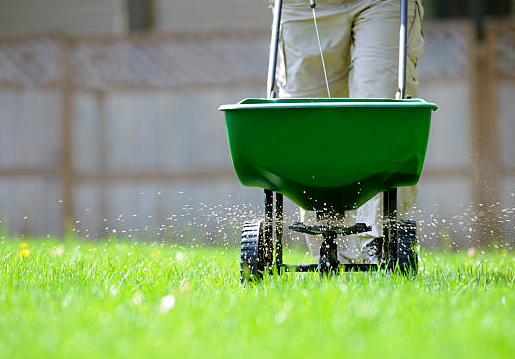Maintaining a lush and healthy lawn throughout the year requires different care techniques depending on the season. Here’s a comprehensive guide to lawn maintenance for each season to keep your garden grass thriving.

Spring Lawn Care:
Mowing:
-
Ryegrass begins to grow when the temperature reaches above 50°F (10°C). In March, mow once, then in April, mow twice. By May, the grass will enter its vigorous growing phase, so mow every 10 days.
Watering:
-
Spring typically brings plenty of rainfall, so additional watering may not be necessary. However, if there’s a dry spell, water every 3 to 5 days, ensuring deep watering. Mornings are the best time for watering to allow the soil to warm up. Watering during spring helps develop deep roots, making the grass more resistant.
Fertilization:
-
Apply nitrogen-rich fertilizers like urea 1 to 2 times during spring, with around 20g per square meter.
Summer Lawn Care:
Mowing:
-
Bermuda grass thrives in temperatures between 77°F (25°C) and 89.6°F (32°C). From June to August, it grows rapidly, and you’ll need to mow every 10 days. The general rule is to mow no more than one-third of the grass height, leaving it around 4 to 6 cm tall.
Watering:
-
During summer’s high temperatures, water more frequently, especially during sunny spells, ideally watering in the evening. Inadequate watering weakens the grass and makes it prone to diseases and weed invasion. Overwatering can lead to oxygen deprivation in the soil and root damage, so balance is key.
Fertilization:
-
Ensure even distribution of fertilizers to avoid patchy growth. Areas with too much fertilizer will grow quickly and become too dark, while those with insufficient fertilizer will have pale, weak grass. Apply fertilizer evenly to avoid burning the grass or creating bald spots.
Fall Lawn Care:
Mowing:
-
In fall, mow 2 to 3 times a month. By mid-October, the lawn will start transitioning, so after mowing, sow ryegrass seeds for the winter season.
Watering:
-
If the weather is dry, water every 2 to 3 days, preferably in the early morning to prevent diseases and moisture evaporation.
Fertilization:
-
Apply a balanced NPK (Nitrogen, Phosphorus, Potassium) fertilizer with about 20g per square meter to help the grass prepare for the winter.
Winter Lawn Care:
Mowing:
-
Grass growth slows down in winter, so you’ll generally only need to mow 1 to 2 times for the season. Keep the mowing height slightly higher to protect the grass.
Watering:
-
Warm-season grasses usually don’t need watering in winter. However, if the soil is too dry, the roots can dry out, leading to grass death. Before the winter, give the lawn a deep watering to ensure the roots are well-hydrated for better recovery in the spring.
Fertilization:
-
In winter, apply organic fertilizers such as peat or compost to nourish the grass and prepare it for the coming spring.
Lawn Pest and Disease Control Throughout the Year:
Pests and diseases are most common during late spring, early summer, and the monsoon season, usually caused by fungi that thrive in warm, moist conditions. It’s essential to treat any issues quickly.
-
Fungal Diseases: Look out for disease patches, powdery mildew, or rust. Treat with fungicides like Triadimefon or Mancozeb (600–800x dilution).
-
Insect Pests: During the summer, various insect pests can harm your lawn. Use broad-spectrum insecticides, such as Cypermethrin or permethrin, to protect your lawn from these pests.
By adjusting your lawn care routine with each season, you can ensure that your grass remains healthy and beautiful throughout the year. Regular attention to mowing, watering, fertilizing, and disease control will give you a lush, green lawn to enjoy all year round. Happy gardening!

